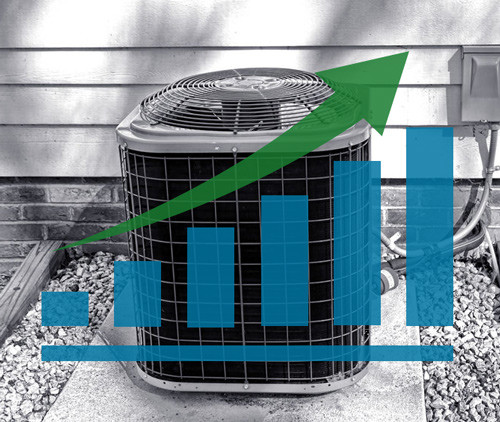What is SEER rating and what you need to know?
If you have central air conditioning in your home or are considering converting to refrigerated air, you may have heard SEER ratio or EER. SEER stands for Seasonal Energy Efficiency Ratio, while EER is Energy Efficiency Ratio. Why are there two energy standards? Both of these measure the energy efficiency of your air conditioning system. The higher the number, the more efficient your air conditioner is. The more efficient your system is the lower your energy costs are.
1. What is the difference between EER & SEER?
EER of an air conditioner is measured by the output amount of cooling created by the air conditioner, which is measured in (BTUs) divided by the electrical power input (watts) to run the air conditioner. EER is based on a set temperature of 95 degrees.
2. SEER Explained…
SEER represents the seasonal energy efficiency of air conditioners. Meaning that it represents a more accurate rating for our climate because it is based on a range of outdoor temperatures from 68 degrees to 104.
SEER for central air conditioning (refrigerated air) systems ranges from 14 – 26. If you have an older system you may see SEER ratings lower than 14. As technology advancements allow air conditioners to become more efficient the higher the standards become. Currently, the lowest SEER available for installation is 14.
3. What You Need To Know:
If you’re replacing an existing air conditioner or converting from swamp to refrigerated air make sure to talk to your HVAC company about SEER options. With our New Mexico climate, it makes sense to pay attention to SEER. Because our temperatures range from 80 – 100 degrees during Spring and summer SEER rating offers a more accurate energy rating for how your air conditioner will be used to cool your home.
4. How do I find the SEER on my air conditioner?
All air conditioners will come with an energy guide yellow sticker showing the SEER of the unit. Some air conditioners will have both EER and SEER ratings on the energy guide sticker. So make sure you’re comparing SEER to SEER and EER to EER. Comparing SEER on one model to EER on another will not give you an accurate comparison.
5. SEER and Costs
The higher the SEER rating the lower your energy costs will be. However, higher SEER air conditioning units can have a higher installation cost. But it will be beneficial in the long run to go with a higher rated SEER unit if you are worried about high energy costs. PNM currently has rebates for high SEER air conditioners that may help offset the initial installation costs. Also, make sure to ask your HVAC professional about energy-efficient models and options.
If you still have questions about SEER and would like to talk to a professional contact us today for a free estimate.

Want more information?
Download our refrigerated air guide:
Are you considering converting to refrigerated air conditioning? Get valuable information in our refrigerated air guide before you buy. Download for free today.

